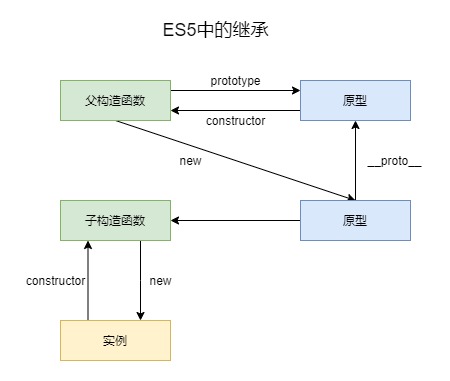ES6和ES5中的继承关系梳理
ES5中的继承
ES5中可以通过原型链的方式实现继承。实现方式如下
function Parent() {}
function Child() {}
Child.prototype = new Parent();
Child.prototype.constructor = Child;
此时,Child继承了Parent。在这个关系中,可以看到Child的原型指向了Parent的实例,Child的构造器指向了自己的构造函数。除此之外它们之间还有什么关系呢?在ES5中,还有一个__proto__属性,每一个__proto__属性都指向对应的prototype。
const child = new Child();
console.log(child.__proto__ === Child.prototype); // true
console.log(Child.prototype.__proto__ === Parent.prototype); // true
关于原型和原型链之间的关系,之前的文章JS中原型与原型链的关系有所介绍。

在图中可以清晰地看到上述两行代码的执行结果为true。
ES6中的继承
ES6中有了类的概念,使用extends关键字实现继承。
再次执行上述的代码
class Parent {}
class Child extends Parent {}
const child = new Child();
console.log(child.__proto__ === Child.prototype); // true
console.log(Child.prototype.__proto__ === Parent.prototype); // true
发现其执行结果仍然为true。针对ES6,可以画出它们的继承关系如下

总结
js之间的继承关系单纯的靠文字去理解还是很容易混淆的。但是如果画出图形来看就一目了然了。
- 本博客所有文章除特别声明外,均可转载和分享,转载请注明出处!
- 本文地址:https://www.leevii.com/?p=2411

